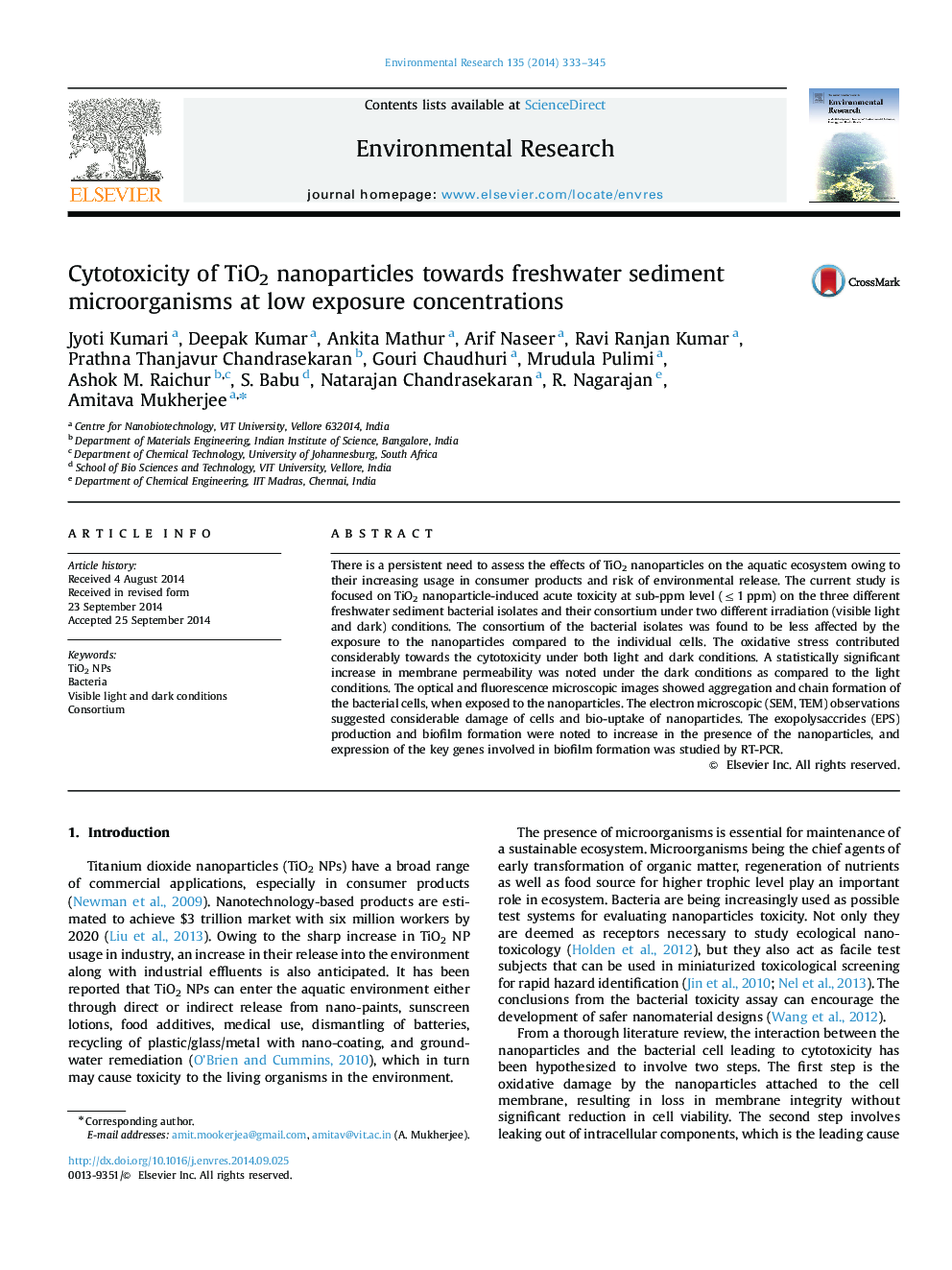| Article ID | Journal | Published Year | Pages | File Type |
|---|---|---|---|---|
| 6352924 | Environmental Research | 2014 | 13 Pages |
Abstract
There is a persistent need to assess the effects of TiO2 nanoparticles on the aquatic ecosystem owing to their increasing usage in consumer products and risk of environmental release. The current study is focused on TiO2 nanoparticle-induced acute toxicity at sub-ppm level (â¤1 ppm) on the three different freshwater sediment bacterial isolates and their consortium under two different irradiation (visible light and dark) conditions. The consortium of the bacterial isolates was found to be less affected by the exposure to the nanoparticles compared to the individual cells. The oxidative stress contributed considerably towards the cytotoxicity under both light and dark conditions. A statistically significant increase in membrane permeability was noted under the dark conditions as compared to the light conditions. The optical and fluorescence microscopic images showed aggregation and chain formation of the bacterial cells, when exposed to the nanoparticles. The electron microscopic (SEM, TEM) observations suggested considerable damage of cells and bio-uptake of nanoparticles. The exopolysaccrides (EPS) production and biofilm formation were noted to increase in the presence of the nanoparticles, and expression of the key genes involved in biofilm formation was studied by RT-PCR.
Keywords
Related Topics
Life Sciences
Environmental Science
Health, Toxicology and Mutagenesis
Authors
Jyoti Kumari, Deepak Kumar, Ankita Mathur, Arif Naseer, Ravi Ranjan Kumar, Prathna Thanjavur Chandrasekaran, Gouri Chaudhuri, Mrudula Pulimi, Ashok M. Raichur, S. Babu, Natarajan Chandrasekaran, R. Nagarajan, Amitava Mukherjee,
